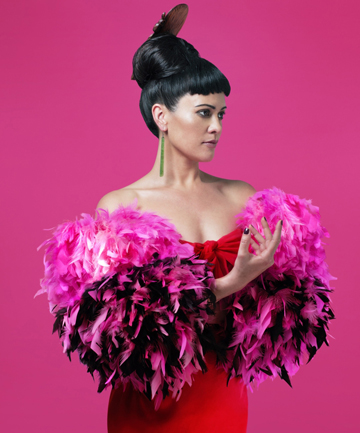
Paniora by Briar Grace-Smith, directed by Colin McColl
Soundings Theatre, until March 5
Paniora is an extraordinary piece of theatre. I can’t think of any New Zealand play, Maori or Pakeha, which is anything like it, combining as it does storytelling, dance, music, family melodrama, and a touch of farce and sprinkling of magic realism. Without the dance, however, it might be a disaster.
While the playwright herself has described it as “like a tele- novella” with “love and lust in the dust” as the driving force of the familiar plot line and with various themes that take us into racial, tribal and nationalistic differences and how two cultures clash, come together and then, maybe, find a modus vivendi.
The cultural clash is between the proud Maori descendants of a Spanish whaler who married five Ngati Porou women in 1835 – the start of the Paniora hapu. The Hotai-Martinez family are holding a family hui to celebrate the restoration of their grand homestead on the East Coast.
The family speak their version of Spanish, eat tapas, attempt flamenco, wear beautiful shawls, and hope the highlight of the celebrations is to be a bullfight with a real Spaniard, who has been hired from his job in “a shitty bar in Courtenay Place, ” to be the matador. Barnie Duncan plays Esteban Valdez, a stereotypical Spaniar, with passion and a faultless accent.
The household is dominated by a grumpy, fault-finding kuia (Nancy Brunning), while her son (Kirk Torrance) is still in love with a woman (Miriama Smith) from his youth who has returned to live on a neighbouring farm with an alcoholic husband (Calvin Tuteao). His wife (Hera Dunleavy) and their daughter (Keporah Torrance) deal with the situation in their own ways.
The setting is simple – a curving ramp that rises high above the stage. The startling opening scene is a dance by the superb Taiaroa Royal, who merges Maori and Spanish dance into a perfect synthesis. Royal and Taane Mete’s Okareka Dance Company also provide the most thrilling parts of the play, dancing a stampede of cattle and the bull in the penultimate finale. They also appear as silent spirits of the past.
Ad Feedback
–